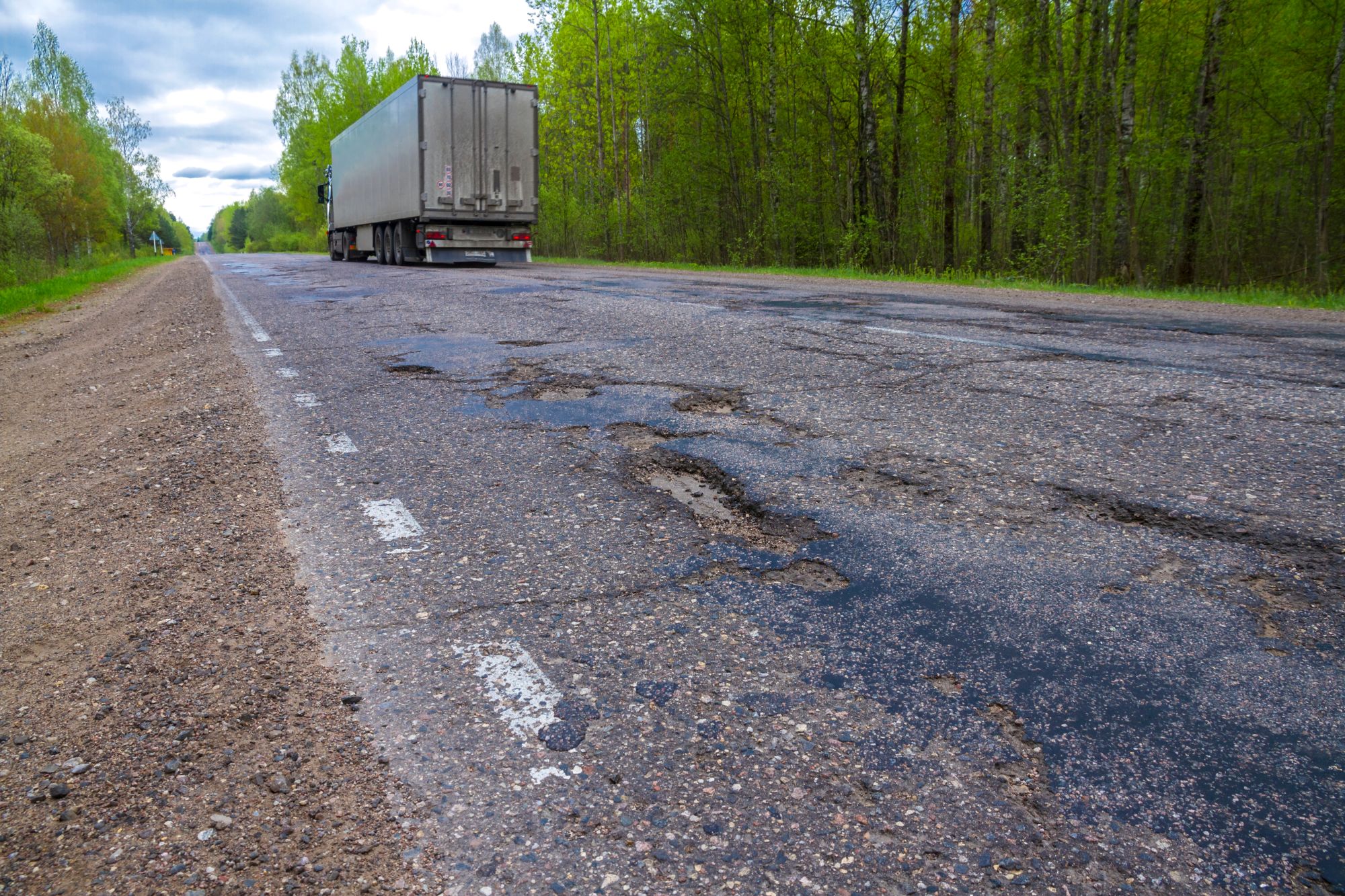
Guest
Impacto de la financiación británica de infraestructuras en el sector de la movilidad
Creado: 02/07/2025
•
Actualizado: 03/07/2025
Tras años de inversiones irregulares y congestión creciente, el Gobierno británico se ha comprometido a invertir más de 700.000 millones de libras en infraestructuras durante la próxima década, gran parte de ellas destinadas a las carreteras del país. Desde nuevos corredores para el transporte de mercancías hasta sistemas digitales de tráfico de última generación, el impacto de la Estrategia Decenal de Infraestructuras sobre los conductores comerciales y el sector de la movilidad en general podría ser transformador.
Las carreteras llegan a su límite
Las carreteras son sólo una parte de la combinación de transportes del Reino Unido, pero transportan la inmensa mayoría de las mercancías. Según datos del Gobierno, el 81% del transporte nacional de mercancías y el 75% de las importaciones y exportaciones se realizan por carretera, lo que la convierte en la espina dorsal de la logística y la economía británicas.
Y, a pesar de constituir poco más del dos por ciento de la red de carreteras del Reino Unido en longitud, la Red Estratégica de Carreteras (SRN) transporta el 34% de todos los viajes por carretera, incluidas muchas de las rutas más sensibles al tiempo y de mayor volumen de mercancías. Para los conductores que las utilizan, su estado y capacidad repercuten directamente en la seguridad, la eficacia y el rendimiento de las entregas.
Sin embargo, los datos del Índice de Estado de las Carreteras (RCI) muestran que alrededor de 24.500 millas -más de una de cada 10 millas- de la red de Inglaterra y Gales requerirán probablemente mantenimiento en los próximos 12 meses.
Los recientes cierres de emergencia de varios puentes han puesto aún más de manifiesto la vulnerabilidad de la red. En algunas zonas, las estructuras de soporte agrietadas y el hormigón de décadas de antigüedad han creado condiciones peligrosas para todos los usuarios de la carretera, especialmente para los camiones, que suelen ser los primeros en sufrir restricciones de peso o desvíos forzosos.
El Gobierno ha respondido con un nuevo fondo de 1.000 millones de libras para reparar y reconstruir puentes, pasos a nivel y pasos elevados deteriorados, en el marco de su estrategia de infraestructuras. Se trata de un paso positivo que refleja la creciente presión del sector. Para los conductores profesionales, podría significar menos desvíos, menos restricciones repentinas y menos tiempo perdido en infraestructuras que no son adecuadas para la logística moderna.
Pero la seguridad no consiste sólo en evitar fallos catastróficos. También se trata de la capacidad de recuperación a largo plazo, garantizando que las carreteras, puentes y apartaderos se mantengan adecuadamente antes de que se conviertan en peligros. Esta renovada atención al mantenimiento indica que la conservación de las carreteras puede empezar por fin a estar a la altura de la escala, el tamaño y la velocidad de los vehículos que dependen de ellas.

El problema de los baches
Aunque los proyectos de gran repercusión dominan los anuncios, a menudo es el estado cotidiano del firme de las carreteras lo que más afecta a los conductores. Para los transportistas, los baches son algo más que una molestia: son un peligro persistente para la seguridad y una carga costosa.
La exposición repetida a superficies irregulares aumenta el desgaste de los vehículos pesados, daña los neumáticos y la suspensión y contribuye a la fatiga del conductor. En algunos casos, los daños causados por los baches han obligado a retirar los vehículos de la carretera para reparaciones de emergencia, interrumpiendo las entregas y afectando a los acuerdos de nivel de servicio.
Para los conductores, los riesgos son personales. Tratar de evitar los baches -especialmente en carreteras estrechas o con mucho tráfico- puede dar lugar a maniobras peligrosas. Si a esto le añadimos el mal tiempo, la escasa iluminación o los ajustados plazos de entrega, la apuesta no hace más que aumentar.
Como parte de su impulso a las infraestructuras, el Gobierno ha asignado 1.600 millones de libras en el marco del Plan para el Cambio para mejorar las infraestructuras locales, incluidos los baches, las superficies agrietadas y las calzadas deterioradas. El objetivo es que las carreteras sean más seguras y fiables, sobre todo en las rutas de transporte de mercancías.
No solucionará el problema de la noche a la mañana, pero marca un cambio de prioridades: reconocer que el bienestar del conductor empieza por lo básico, y que un viaje seguro y cómodo depende de unas carreteras en buen estado.
Para las flotas, las ventajas incluyen menos reparaciones imprevistas, menos reclamaciones al seguro y menos tiempo de inactividad del conductor. Para los conductores, significa menos sacudidas, menos estrés y una cosa menos de la que preocuparse en un turno largo.
Una red fiable
El bienestar del conductor está en el centro de la conversación sobre el transporte moderno. Las largas jornadas laborales, los retrasos en los horarios y las instalaciones inadecuadas han pasado factura. Pero los últimos planes del Gobierno ofrecen la esperanza de una red más segura y mejor conectada.
En todo el Reino Unido, las instalaciones para conductores tienen dificultades para satisfacer la demanda. Los aparcamientos son a menudo limitados, los servicios son escasos y muchas áreas de descanso carecen de las comodidades y la seguridad necesarias, sobre todo para las operaciones de larga distancia. Por eso el Gobierno también está mejorando el entorno de la conducción: aparcamientos más seguros, mejores servicios de bienestar y reformas de la planificación para acelerar el desarrollo de nuevos emplazamientos.
Al mismo tiempo, se está acelerando la inversión en centros de carga y repostaje para camiones eléctricos y de hidrógeno. Moto, por ejemplo, se ha comprometido a instalar más de 300 cargadores eléctricos para camiones en 23 puntos de la autopista, mientras que Ashford Truckstop se está transformando en un importante centro de recarga para el transporte de mercancías a través del Canal de la Mancha. Estas instalaciones no se limitan a mantener los vehículos en movimiento, sino que ofrecen a los conductores lugares seguros y bien equipados para descansar y recargarse.
Si sus conductores buscan un lugar seguro donde parar, nuestra aplicación intruck les permite identificar y reservar paradas de descanso en todo el Reino Unido y Europa. Más información y descarga aquí

El coste de la congestión
Los atascos, las rutas impredecibles y la presión por cumplir los plazos de entrega contribuyen al estrés y la fatiga de los conductores, y hacen de la carretera un lugar más peligroso.
Grandes obras de infraestructura como el cruce bajo del Támesis, la desdoblamiento de la A66 y la mejora de la isla Simister de la M60 están diseñadas para reducir la congestión y disminuir el riesgo de accidentes en algunos de los puntos más conflictivos del Reino Unido.
Además, sigue habiendo un impulso para introducir herramientas digitales que contribuyan a unos desplazamientos más seguros y fluidos. Las alertas de tráfico en tiempo real, los sistemas de detección inteligente y una mejor gestión del tráfico ayudarán a los gestores de flotas y a los conductores a responder rápidamente a las perturbaciones y a cambiar de ruta cuando sea necesario.
(https://nationalhighways.co.uk/our-work/digital-data-and-technology/digital-roads/) ya está sentando las bases, con infraestructuras inteligentes capaces de detectar antes los peligros, gestionar los flujos de tráfico de forma más inteligente y comunicar actualizaciones más claras y en tiempo real.
¿Qué significa esto para la movilidad?
Un paso adelante para la movilidad y el bienestar de los conductores. El esfuerzo nacional coordinado para hacer frente al retraso en infraestructuras del Reino Unido y modernizar las carreteras de forma que beneficie a los conductores que más dependen de ellas.
La verdadera prueba será la ejecución. Convertir la financiación en mejoras tangibles exigirá escuchar a los conductores, aprender de la experiencia de primera línea y medir el éxito en función de cómo se sienten las carreteras, no sólo de lo que cuestan.
"Esta nueva oleada de inversiones no se limita a reducir la duración de los trayectos", afirma Stuart Willetts, Director de Desarrollo Comercial de SNAP en el Reino Unido. "Se trata de construir una red de transporte que favorezca el bienestar de los conductores, la eficiencia operativa y la transición hacia una movilidad limpia. Estamos impacientes por ver los resultados".
¿Quieres ver cómo evoluciona la movilidad donde estás?
Utiliza el Mapa SNAP para encontrar servicios y soluciones cerca de ti, no importa por qué camino vayas.



